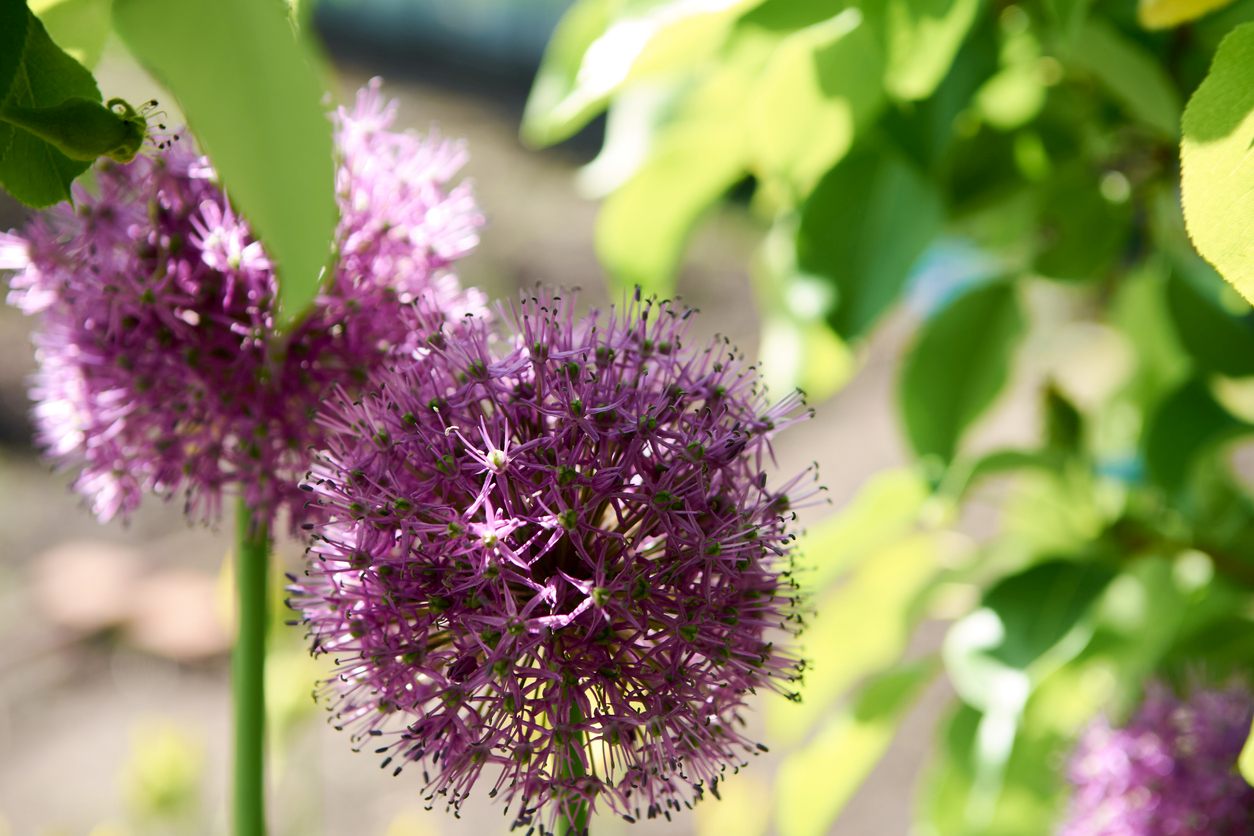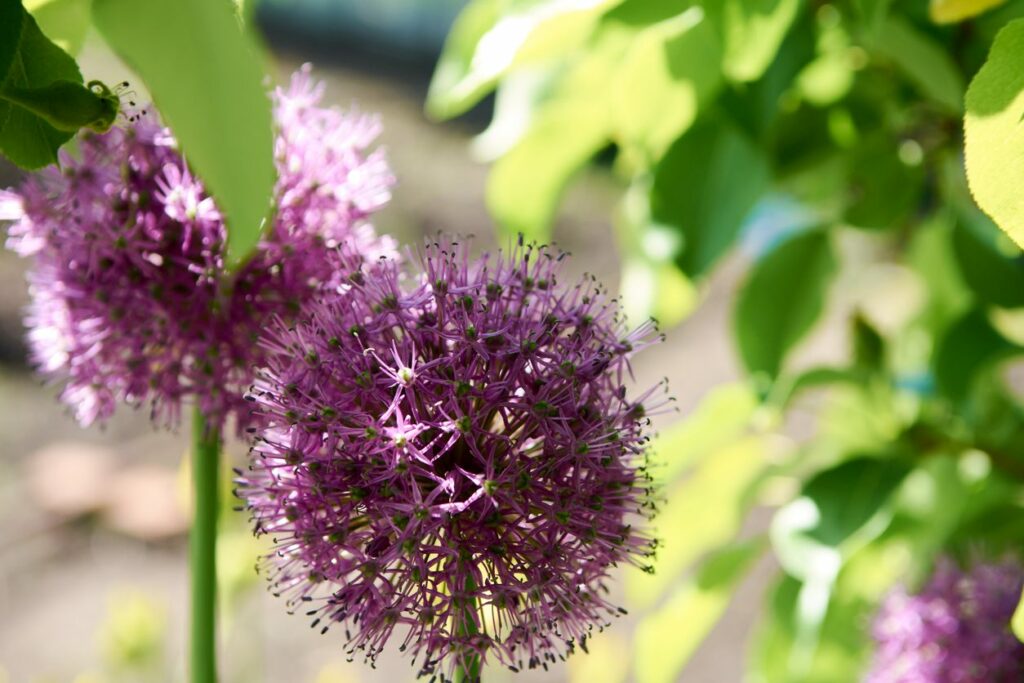Purple Sage – How To Plant And Care For Salvia Flowers
As all horticulturalists know, no garden would be the same without purple sage. This perennial plant flowers in the summer and fall and turns your garden into a carnival of purple shades. As fragrant flowering plants, the purple sage uses its strong scent to attract pollinators from bees to butterflies that fill the place with life and colors.
As far as border plants are concerned, the purple sage is pretty drought tolerant. It can handle dry soil very well until you remember to water it. So what is the purple sage, what does it take to plant it in your garden, and how do you care for it to make sure its purple blossoms come back every year?
Purple Sage at a Glance
Whether you grow the purple sage (Leucophyllum frutescens) in a container in your kitchen or out in the garden, it’s one of those plants that fit right in whatever the place or surroundings. The plant has been grown for centuries for its medicinal benefits. But you can easily use it in your cooking especially in chicken and pork dishes. Risotto and squash recipes get a whole new flavor when you add a few sprigs of fresh sage to the pot.
The aroma of the purple sage, also known as salvia, makes it a good candidate to grow in the company of other herbs such as basil and rosemary. It is still used to treat indigestion problems, stomach aches, and improve memory. Some varieties of salvia are grown for their landscaping purposes mainly for the colorful flowers and shapely leaves.
Sage belongs to the mint family (Lamiaceae) and has distinguishing features that make it hard to miss. The first thing you’ll notice about it is the leaves. They have a velvety texture and have a dark green shade and grow on square stems. The flowers shoot out of the plant in long spikes. The dense purple flowers have tubular shapes and appear on clusters on the spike.
Among the many birds and insects the purple sage attracts, hummingbirds stand out. They have an affinity to this perennial plant due to its tubular flowers that fit its beak and the sweet nectar it produces. However other garden pests such as rabbits don’t favor this plant due to its strong fragrance which acts as a repellent.
Purple Sage Varieties
Purple sage comes in different types and varieties. Some are good for decoration, while others are used for cooking. All in all, sage has over 900 varieties. But not all of them are good in your garden or kitchen. Here are the most popular ones:
- Garden Sage: A hardy species that is known as the common sage. It is often found in gardens and kitchens thanks to its aromatic scent and flavors. This sage resists cold temperatures making it ideal to grow in many gardens as well as indoors. It has small leaves that vary from the dark green to silvery shades as well as purple flowers. The sage lasts for 4 years before you have to replace it.
- Grape Scented Sage: a giant of a plant by sage standards. In fact, it’s one of the largest sage plants you can grow. Reaching heights of 8 feet and 6 feet wide, it takes a lot of space in your garden and hardly suitable for indoor planting. The flowers smell somewhat like grapes and people boil them to make tea.
- Mexican Bush Sage: A smaller variety than the Grape Scented Sage species. It grows to 4 feet and is tolerant of drought. The flowers are either purple or white and are used for decoration.
- Purple Sage: Similar to Garden Sage, except that the leaves are usually purple when young before they turn to green. It doesn’t bloom this much and is mainly used for cooking and medicinal benefits.
- Mealycup Sage: Another small species of the sage family that doesn’t grow beyond 3 feet on a good day. The flowers can either be blue as in the Victoria Blue variety, or purple as in the Empire Purple.
- Scarlet Sage: an annual sage that needs full sun to grow and thrive. It also needs well-drained soil and can handle partial shade as long as it gets sunlight a few hours every day. Its scarlet blooms are gorgeous and last from the spring until the fall.
How to Grow Purple Sage?
One of the first things you need to pay attention to is where to grow your purple sage. Even if you’re preferring a different sage variety from the list above, the location and sunlight can make or break your plant. The whole process of planting and growing purple sage can be distilled in these easy steps.
- The best time to plant sage is in the late spring around the time the last frost is over. The soil should be around 65 degrees F for the seeds to germinate.
- Growing sage from seeds is usually slow and takes a lot of time and patience. You could have to wait for a couple of years before you see the sage fully matured.
- Plant the seeds indoors about 8 weeks before the last frost. After 3 weeks, the seeds germinate and then you can transplant them to their permanent location either in a container or in the garden.
- If you prefer to use a cutting to propagate purple sage, it’s usually faster and doesn’t require a temporary pot. Just plant the cutting in the prepared soil and water it.
- Purple sage can grow in different types of soil. From the sandy to loamy, as long as it’s well-drained.
- Make sure the pot or bed gets plenty of sunlight. For that, it should face the south or west to get the longest hours in the sun.
- If you’re planting sage indoors, place the container near a window facing the south or west.
- Keep enough space between the plants. It’s best to allow about 24 inches (a little less than a foot) of space between each sage plant.
- Water the plant regularly but avoid overwatering it. You should wait until the topsoil is dry before you irrigate it.
Purple Sage Care
As with most hardy plants that can handle drought and cold temperatures, purple sage doesn’t require much of your time in the way of care or maintenance. It still needs regular maintenance just to make sure that it’s growing well.
Mulch
The best type of mulch to use with purple sage is shredded or chopped bark. Spread a 2-inch layer over the soil to help with water retention, drainage, and to keep the temperature of the soil stable. Mulch also prevents the growth of weed and keeps insects at bay. Avoid piling mulch around the base of the plant since that could serve as nesting grounds for bugs that feed on the stem of the sage. Piled up mulch also promotes water stagnation that leads to root rot.
Water
No matter what sage species you grow, they mostly prefer dry soil over a moist one. Hold back on irrigation and wait for the soil to go dry. Even if the leaves droop, once you water it, they will perk up again. However, don’t take a chance on the plant when the weather is hot and dry. During the flowering cycle, purple sage needs more water than any other time. Don’t waterlog the soil since that causes many diseases and the plant won’t survive.
Fertilizer
Before you plant your purple sage, make sure the soil is well balanced and its pH is around 7. If the soil is a little acidic, you can add limestone or wood ash to neutralize the acidity. Other than that, you won’t need fertilizer to grow your kitchen variety sage. It will interfere with the flavor and aroma of the sage. However, if you’re growing it for its ornamental values, then you can use a 10-10-10 liquid fertilizer before the blooming cycle.
Pruning
Many people prune purple sage for different reasons. When grown as a hedge plant, you will need to prune it regularly to keep its branches under control. The same goes for ornamental sages grown for their landscaping values. The downside to so much pruning is that eventually, the plant becomes bare branches with a few leaves and blooms at the top. After a couple of years, you’re left with a wooden plant that has no more looks nor appeal.
To avoid this unpleasant outcome, go easy on the trimming and use a pair of pruning scissors to cut away the wayward branches. The best times to prune purple sage are in the early spring and late fall. Don’t over prune one side of the plant since that would lead to grotesque results. Try to maintain the natural shape of the bush as much as possible.
Propagation
Even if you don’t propagate the purple sage, it will do that on its own without much input on your side. However, if you want to grow a purple sage, the best way is to use cuttings of the plant in the late spring as we explained earlier. Make sure the cutting doesn’t have any flowers.
The cutting should be about 3 inches long. Remove the lower leaves and plant it in a pot of moist compost. Cover the pot with a plastic bag to protect the plant against temperature drops. Avoid exposure to direct sunlight until the plant establishes roots. After about 3 weeks, the roots will develop and you can remove the plastic covering.

